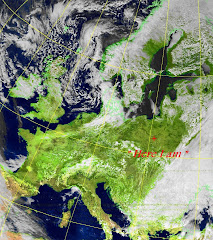 |
| DDS interface dongle left, antenna c/o top, main board below |
 |
| antenna change-over circuit removed to reveal main circuit board |
So that I can join in the fun of using weak signal data modes such as JT9, JT65, FT8 and WSPR on the 475KHz 630m band I have built a phasing exciter for a low power single-sideband transmitter. Audio input signal is generated by pc data mode software and sound card. The rf signal source is a cheap AD9851 DDS module bought at an online auction site. Its frequency of operation is changed using the usb dongle and interface software obtained from www.spectecs.com. The rf phase shifter is a dual J-K flip-flop chip, af phase shifter comprises two quad opamps, and the mixer is a dual 1to4 mux/demux fet bus switch.
To give the project a smart appearance I chose a Hammond type 1455N1201BK box for it. Even before the prototype was finished, I couldn't resist the temptation of connecting it to my inverted 'L' antenna and trying it out. The exciter on its own produces only 1mW ( 1 milli watt, 0dBm ); but this was sufficient for my WSPR beacon signal on 474.2KHz to be received with SNR -23dB at a distance of 11kms by a monitoring station.
The prototype was completed with the addition of a class A rf driver amplifier to increase the output power to 100mW, and an automatic rf sensed antenna change-over switching circuit. Since then my signal has been received in Norway, distance 1071kms, Estonia, distance 816kms and Germany, distance 700kms, which surprised me as the antenna's directionality favours the east. Sadly there don't seem to be any foreign receiving stations in the east at the moment.












